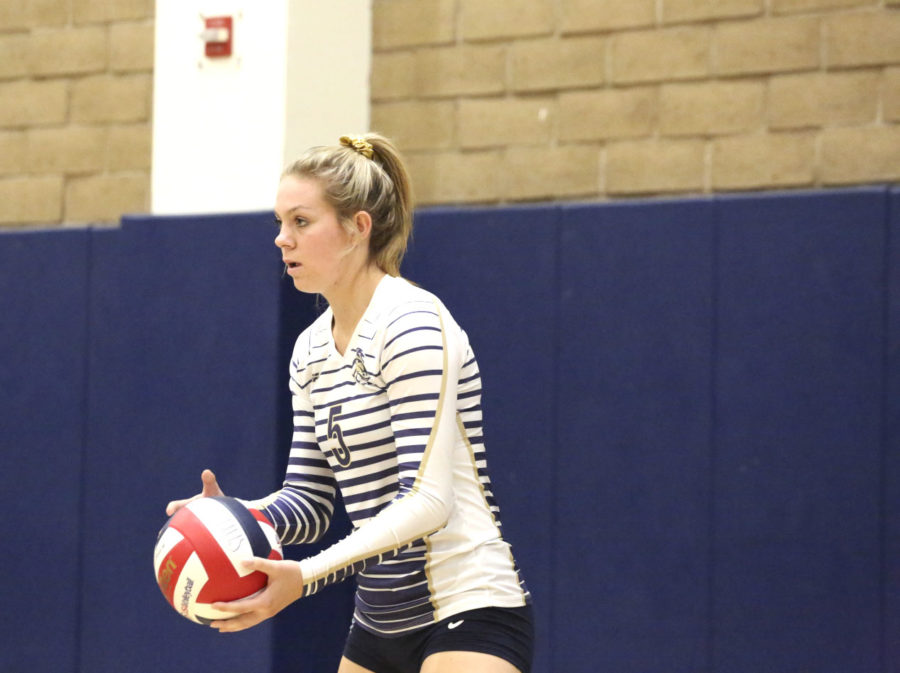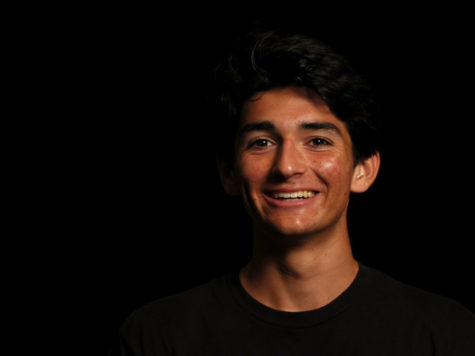Commitment and Stallion Athletics: Is it too Much?
Erika Wiles (12) stands at the serving line, ready to start the play for a volleyball game. Volleyball started their season over summer and are undefeated league champions.
October 20, 2017
One of the many aspects of school life that SJHHS excels in is athletics. Even in the short amount of time the school has been around, our sports teams have qualified for CIF many times, and our boy’s golf team has even won the CIF championship.
But all of this success seems to come at a cost for the athletes. Many of the sports teams, such as cross country, girls basketball, and volleyball, have practice almost everyday and tournaments over the summer.
When asked if the summer commitment ever feels like too much, Sophie Schlesigner, SJHHS sophomore and captain of the JV cheer team said, “Sometimes cheer seems like a lot in the summer because it’s a lot of practices and the practices are long; they’re like five hours. So definitely at the end of the summer, beginning of the school year you get really tired.”
Later, she went on to say that the summer practices and camp were necessary, saying “our games start the first week of school, so if we didn’t have summer practices we wouldn’t have the bonding. We also wouldn’t have any new cheers and we’d basically have to start from scratch and that would be really hard.”
Kiley Espineira, a sophomore basketball player, agreed, saying, “They help our team improve and we also become closer as friends, instead of just teammates even before the school year starts.”
The large amounts of practice don’t stop during the school year. Many sports are a class during the school day, and when they don’t have that period they have practice after school. There are also many games all across the week.
Sometimes it gets difficult for the athletes to balance school, a social life, and their sport. Finding time to fit everything in can often be stressful.
Espineira said, “It’s really hard to balance everything, because everything is supposed to come first. So it’s hard to decide what you have to sacrifice.”
This also puts a physical strain on the team. When a person is running, lifting, jumping and throwing for over two hours every day, it’s no surprise that their body grows extremely fatigued. Joe Kitaen, a senior basketball player, said, “Sometimes my body is just so tired. I’m never really very mentally burnt out, but physically yes.”
All of this physical exertion can even lead to injuries and illnesses. There are a list of injuries, such as runner’s knee, shin splints, tennis elbow, swimmer’s shoulder, and much more that are directly related to to overuse of certain body parts while playing a sport. These injuries are very common among high school athletes. A study done by the Centers for Disease Control and Prevention shows that high schoolers are responsible for about 2 million sports related injuries per year, and overuse injuries account for over half of that number.
But overall, many athletes find time to play, stay healthy, and do well in their classes.
“I feel like I have enough time for cheer. Sometimes it’s hard when you take AP classes. Like when you have a game on Thursday that goes for four hours and then an AP Euro test the next day it might not work out that great, but all in all it’s manageable,” Schlesinger said.
Kitaen added, “I feel like there’s this triangle spectrum with school, sports and sleep, and sometimes you kinda give up sleep. But, you can manage it. You just have to prioritize your time.”
Despite the amount of commitment required, most athletes feel that the reward they get from playing far outweighs the downsides.
Socrates Sgonzos, SJHHS senior and one of the captains of the cross country team sums it up best when he talks about how playing a sport isn’t about you as much as it’s about your teammates and your school.
He said, “It’s a lot of team unity. It’s not really about yourself, it’s about the bonding you make with the team and running for the team.”




